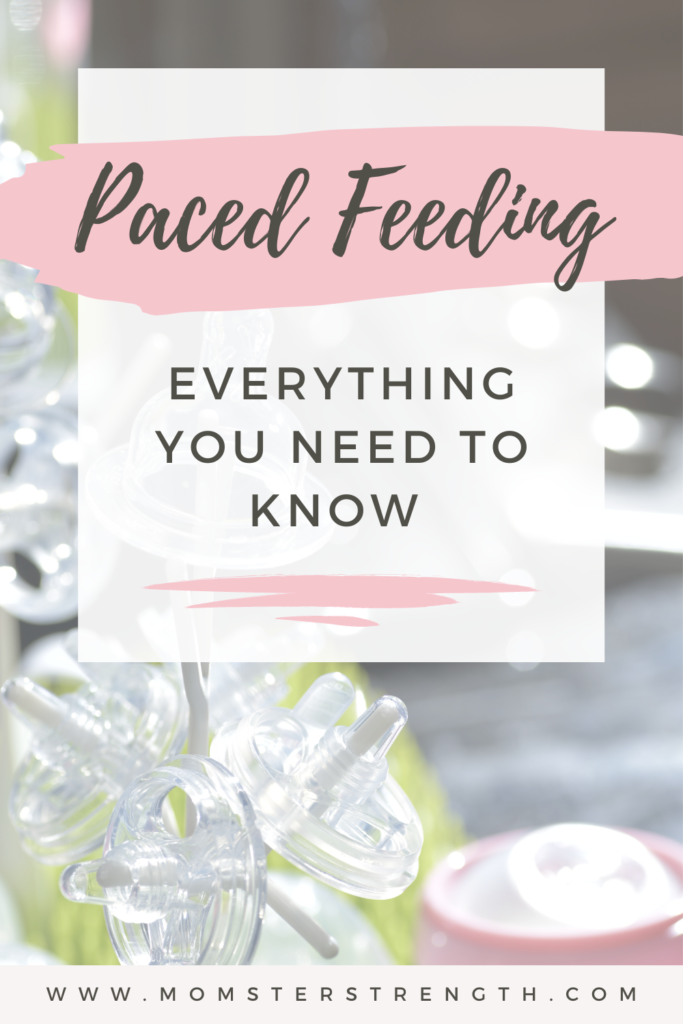Paced Feeding: Everything You Need to Know
If you’re a parent, you’ve probably heard of paced bottle feeding. But what is it? Paced feeding is a method of feeding your baby that helps them to eat more slowly and to stop when they are full. This can help to prevent overeating, as well as digestive problems. In this blog post, we will discuss the benefits of pace feeding and give you some tips on how to do it!

I chose to try paced feeding because my baby was spitting up a lot and seemed to be getting fussy at the end of feedings. I was also hoping it would help him to sleep for longer stretches at night. The first few times we tried it, he did seem to eat more slowly and take breaks during the feeding. He also slept better that night! I would definitely recommend it to other parents to try!
What is paced bottle feeding and how does it work?
Paced bottle feeding works by allowing your baby to control the flow of milk. You will hold the bottle at a horizontal angle, and let your baby feed at their own pace. If they start to gulp or pull away, you will slow down the flow of milk. This method can help your baby to learn how to self-regulate their eating, and to know when they are full.
The benefits
There are many benefits to paced feeding. It can help your baby to avoid overeating, as well as spit-up and gas. It can also promote bonding between you and your baby, as you will be able to interact and make eye contact while they are feeding. Additionally, it can help your baby to sleep better and to wake up less often at night.
How to start paced bottle feeding
If you’re interested in trying this method, there are a few things you should keep in mind.

Step by Step
- Choose a bottle that has a slow flow nipple, and most resembles the breast, such as this one.
- It is important to have a good latch. This means that your baby’s mouth should be open wide and their tongue should be down, so that they can easily take the nipple into their mouth.
- Hold the bottle at a horizontal angle, so that the milk flows slowly.
- You will want to start by offering your baby a small amount of milk. Allow them to drink at their own pace, and then burp them frequently.
- Finally, be patient! It may take a few tries for your baby to get used to it.
Tips for success
There are a few things you can do to ensure that paced feeding is successful.
- Make sure that you are using a slow-flow nipple.
- Offer the bottle at regular intervals throughout the day. This will help your baby to learn when it is time to eat and when they should take a break.
- Start with small amounts of formula or breast milk. You can increase the amount as your baby gets hungrier.
- Encourage your baby to take breaks during the feeding by burping them or holding them upright for a few minutes.
- Be patient! It may take a few tries for your baby to get used to this new way of eating.
- Burp your baby frequently, as this will help to prevent gas and spit-up.
Troubleshooting tips
If your baby isn’t taking to paced feeding, there are a few troubleshooting tips that you can try.
- First, double-check that you are using a slow-flow nipple.
- You may also want to try a different position, such as holding the bottle slightly above your baby’s head.
- Additionally, it is important to be patient and to give your baby time to adjust to the technique.
Final Thoughts
Pace feeding is a great way to help your baby learn how to self-regulate their eating. It has many benefits, and can be a great bonding experience for you and your baby. If you have any questions about pace feeding, please feel free to contact us! We would be happy to help you. For more tips on pumping, check out our other articles.
Have you tried pace feeding? What were your experiences? Share them in the comments below!

Additional Resources:
- What is paced bottle feeding? And how do I do it? – Kellymom.com (article)
- Paced Bottle Feeding – MamaNatural (article)






